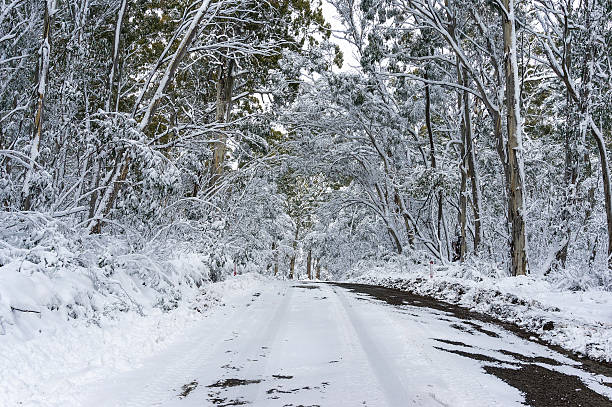Explore the Most Scenic Places to Experience Snow In Australia for a Magical Winter Getaway
Explore the Most Scenic Places to Experience Snow In Australia for a Magical Winter Getaway
Blog Article
Comprehending the Importance of Snow in Australia for Agriculture and Tourist
While Australia is usually connected with sun-kissed beaches and dry outback, it additionally boasts a wide range of snowy alpine regions. As we examine this unusual intersection, the potential impact of moving environment patterns on Australia's snowfall and its succeeding impacts become an engaging emphasis.

The Unanticipated Snowfall: Australia's Alpine Regions
When wintertime capes the globe, Australia's Alpine regions wear a white mantle of snow, a phenomenon that appears virtually paradoxical in this dominantly sun-baked land. As opposed to the stereotypical picture of Australia as a land of beaches and deserts, these regions use a shocking and beautiful contrast. The Australian Alps, stretching across New South Wales, Victoria, and the Australian Capital Area, obtain more snowfall than Switzerland. This unanticipated winter season wonderland supplies a special ecosystem, offering an environment for several indigenous varieties and a snowy play area for winter months sports enthusiasts. The yearly snowfall, although not as bountiful as in some countries, is a crucial aspect of Australia's climate variety and plays a substantial role in the country's agricultural methods and tourism sector.
Winter's Bounty: Snow's Payment to Australia's Water Resources
Regardless of its rarity in the wider landscape of Australia, snow in the Towering areas plays a vital duty in the country's water sources. Functioning as an all-natural reservoir, the snowpack stores water throughout the cold months, gradually releasing it into rivers and dams as it melts in warmer seasons. This procedure makes certain a steady supply of water, helping in the stablizing of the nation's water cycle. This is especially critical for Australia, a continent frequently tormented by droughts. In addition, the snowmelt feeds right into the Murray-Darling Container, a lifeline for numerous communities in the southeastern components of the nation. Without the bounty of wintertime snow, Australia's water sources would certainly be dramatically stressed, affecting both the population and the atmosphere.
White Blanket, Green Area: The Influence of Snow on Australian Agriculture
Although less noticeable, the influence of snow on Australian agriculture is substantial. Snowfall in the high country functions as a natural kind of irrigation, slowly melting and giving a consistent water system to lower-lying farmland. This water-rich setting promotes the development of robust crops, adding to the nation's farming performance. Furthermore, snowfall improves soil health and wellness by introducing dampness and trapping nutrients, which are slowly launched as the snow thaws. This procedure enhances the dirt, promoting the development of much healthier, extra resilient plants. Furthermore, snow cover works as a safety blanket, insulating the ground versus serious winter season temperatures that could otherwise harm plants. Thus, the role of snow in Australian farming is both vital and complex.

Money: Snow Tourism and Its Economic Value in Australia
While the value of snow to Australian farming is commonly underestimated, its payment to the country's tourism industry is unquestionably significant. The snow-laden peaks of Australia's alpine areas attract a flurry of vacationers every winter months, adding millions to the national economic situation. Hence, the financial importance of snow tourism in Australia extends much beyond the inclines.
Future Forecast: Climate Change and Its Prospective Results on Australia's Snowfall
As the world faces the fact of climate adjustment, so too needs to Australia ponder its potential impacts on the country's snowfall. Current clinical designs forecast a decrease why not try this out in Australian snowfall, with potentially extreme impacts on both agriculture and tourism. In some areas, the snow season could be shortened by as much as 80 days by 2050. Such changes endanger the feasibility of Australia's ski sector, which contributes dramatically to the neighborhood economic climate. Much less snowfall can likewise influence the country's agricultural sector, as snowmelt plays an important function in sprinkling plants. The possible impacts of these changes underscore the urgency of environment change reduction initiatives, see here both in Australia and internationally.
Verdict
In final thought, snow is a pivotal component of Australia's company website agricultural and tourist industries. The impending risk of environment change increases worries about the future of Australia's snowfall patterns, possibly interrupting these significant economic industries.

When winter season cloaks the world, Australia's Towering areas put on a white mantle of snow, a spectacle that appears almost paradoxical in this dominantly sun-baked land.Despite its rarity in the wider landscape of Australia, snow in the Towering areas plays a critical function in the country's water resources. Without the bounty of wintertime snow, Australia's water sources would be substantially stressed, affecting both the setting and the populace.
Therefore, the economic importance of snow tourism in Australia extends far beyond the slopes.
In conclusion, snow is a critical component of Australia's agricultural and tourist sectors. Does It Snow In Australia.
Report this page